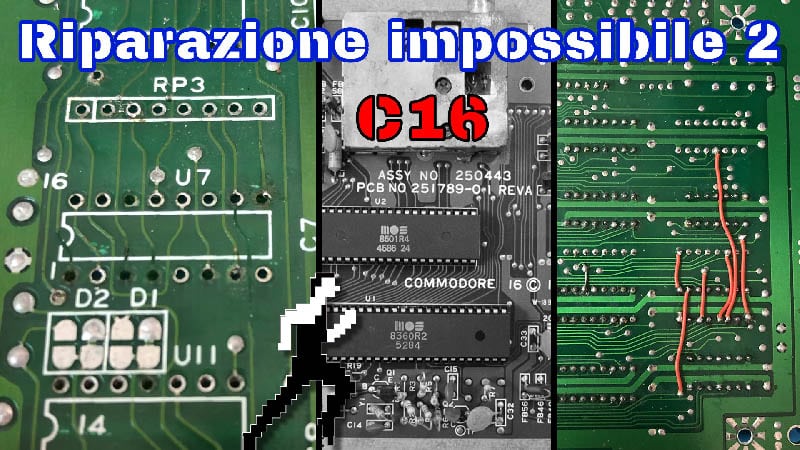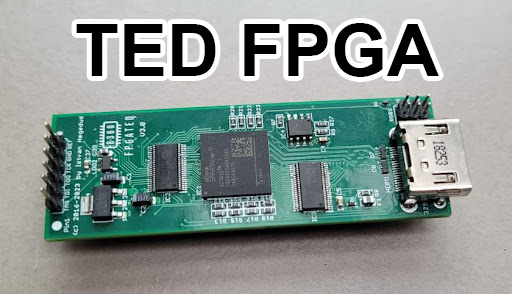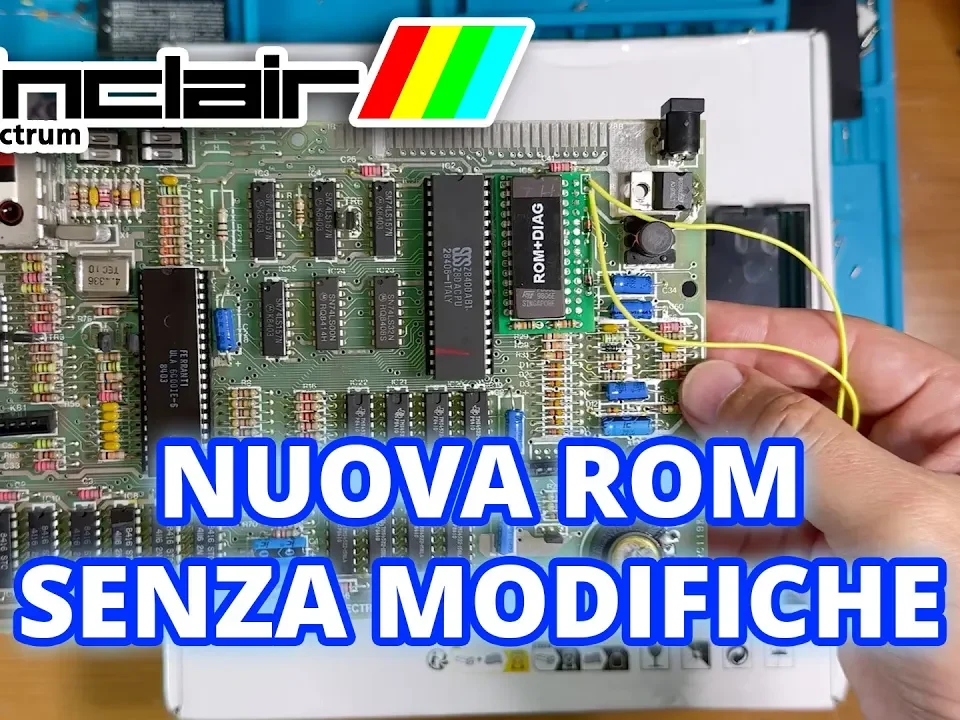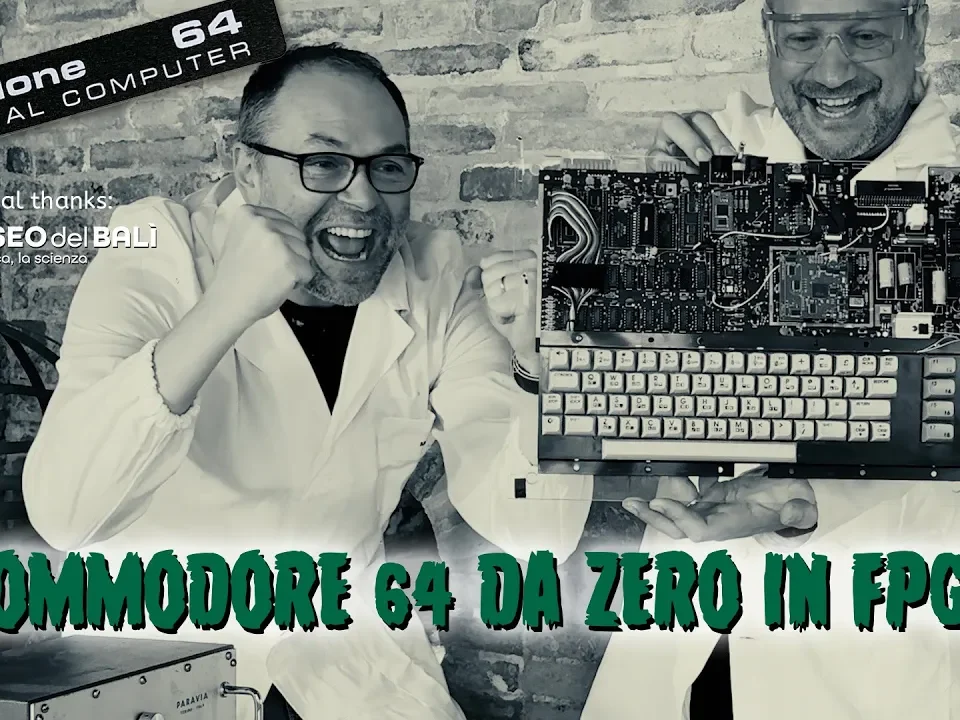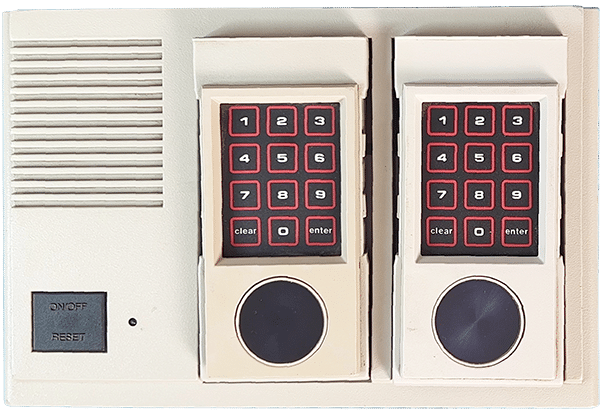
Intellivision composite mod
12 July 2022
How to make PCBs
18 July 2022Where to start
Making a repair of 2 Commodore 16 cards I found various defects and I will try to summarize the possible causes that may not make this computer work.
The Commodore 16, like the Plus4 and the 116 (all the 264 series), is a very delicate computer, in fact its construction was done with the idea of being an economic machine that in its time had to compete with the Sinclair. Unfortunately following the resignation of the founder Jack Tramiel this series was not placed in the market for which it was designed.
The problems that most afflict this series are the TED and the CPU, but as we will see, they are not always the only ones to give problems.
Like any repair, the first thing is SEE, it is necessary to visually check that there are no problems with burnt, broken components or damaged or corroded tracks, cracked or cold welds.
The second step is to check the power supplies, perhaps a blown or faulty regulator may not provide sufficient voltage, a blown fuse or some broken or shorted component.
On this computer, the clogs are pitiful and often the cause of false contacts. Try to see if the insertion of the IC makes a certain resistance or if it goes too wide, if the pins are in good condition etc. if necessary, replace them.
It is very likely that everything is ok so far and so let's continue with our tests ..
Now we can try to understand if the problem comes from the reset circuit, the clock or other. To do this, a logic probe or an oscilloscope can help us, even the small portable ones can be fine.
It is necessary to have the schematic of the machine at hand to begin to untangle the tracks and the components:
here you can find the page of Zimmers of the 264 series
The clock is found on the TED at pin 14 and should produce another on pin 12. This microprocessor is responsible for managing the video and audio as well as controlling the RAM. In addition to the clock it is advisable to also check other pins such as R / W, the inputs and outputs to understand if any signals are generated.
If you have a working machine, you can change the CPU and then the TED to immediately exclude these two components.
Turning now to the processor here we can check the reset which must be low for about 1 second at power up and then go to a high level (5v).
Here too, in addition to the reset signal, R / W, IRQ, RDY and I / O could be controlled.
Se ancora non ne siamo venuti a capo, tranquilli, il problema potrebbe essere altrove e soprattutto più economico visto che questi due integrati costano più del computer stesso 😀
A test cartridge might help, but the way this hardware is made is likely to fail.
At this point, let's go and see the memory and management circuits, it is necessary to patiently check the signals on the RAM and on the control logic and then check the roms and pla.
Situation of the cards
Now let's see in detail the boards I have repaired and their failures
Two cards, two different problems!
It is not often that we find two identical problems, well, on these machines we have a probability that helps us to rule out the most frequent problems. In my case the boards were without main components, so these are all to be excluded.
I had to repopulate the pcb with my C16 and now we see the problem of tab N.1
So excluding the operation of TED, CPU, ROM and KERNAL, I concentrated on RAM and control logic.
Here is the first problem, a faulty RAM (4416) (U5) .. for this problem the diagnostic board could help, it does not necessarily start with the faulty RAM, but after several attempts it may show some signal to make us understand which line presents the problem.
For safety, however, I had replaced the socket of the TED as it did not hold the integrated well. The computer now displays a splash screen and the diagnostics are successful.
We come therefore to the second tab, very badly reduced and let's see why !.
At first glance, the components side did not seem bad, but with a deeper look here the first defects emerge.
The ICs had been socketed but with turned strips and then I understood why !. Probably in removing the chips in an attempt to test them the tracks have also come off !.
One thing to be careful about removing these components;
you need to use a vacuum desoldering iron and it may not be enough, do not think about removing them with just a blower and the copper braid.
By desoldering the RAM faulty even with the desoldering gun I was not able to completely remove the tin because these chips are wedged just well on the pitches and a small residue is enough to keep the component blocked. If we try to remove them like this we risk tearing the pads. The only safe way is to heat (after removing as much as possible with the desoldering iron) the tracks where the chip to be removed rests and using a screwdriver or tweezers, levering very gently until the chip moves, so we could take it out permanently without damaging the PCB.
Basically on this second board I literally had to reconstruct several tracks with a small wire by passing it inside the pad to make continuity between the upper and lower layer. Yep, it was so bad that even the metallization inside the pad was missing.
What's more, in addition to this I had to replace the sockets of the TED and CPU because they were not in good condition and as if that were not enough I also found a 74LS125 that did not work.
Well, after all this hard work I can finally say that this card has been successfully repaired.
All is well that ends well
I tested everything with the diagnostics and the result was all OK.
A small clarification, however, must be made.
If you happen to have a badly reworked or very, very damaged card, you shouldn't repair it. Unfortunately it is bad to say but the repair would cost more than getting another working computer !. I know, having said myself that I would not want to throw away any of these beautiful machines, it is hard, but in the end, nothing is wasted. Consider that these chips unfortunately after all these years it is almost a miracle that they still work, especially these of the C16, and certainly they can be an excellent replacement for other computers that need them and unfortunately are no longer found.
There are currently several projects to adapt a C64 CPU to the C16 but some features are missing, although now there is also a new chip on the market that should solve this problem. However, we still do not have a TED as a replacement and therefore it would be useful to have spare parts. If, on the other hand, this is your car and you want to do everything to recover it, well, in this case you don't look much at your wallet !.

